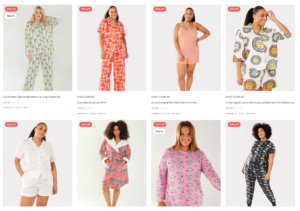By Robin Shek, Founding Partner, Brave Spark
It’s no secret that many consumers have fallen out of love with fast fashion as they opt for more sustainable choices, from specialist sportswear to everyday apparel.
According to a major study by Bain & Company and charity WWF Italy, around two in three fashion brand customers (65%) polled in China, the US, and the UK and Europe claimed they care about the environment and want to shop more sustainably.
That’s easier said than done in the face of the wasteful models still employed by many fashion brands. But even though we’re in the early days of the sector’s new-found focus on sustainable operations, some businesses are clearly leading the way.
Three fashion brands we have worked with – Lucy & Yak, Presca and Zalando – are treading a path out of the unsustainable swamp of fast fashion; one that others can follow towards a brighter, eco-friendlier future. What follows are some of their initiatives aimed at improving sustainability.
Tactics and goals to tackle the fast fashion fix
There are common problems faced by many brands – in fashion as in other sectors – that want to clean up their industry’s act. First and foremost, there’s cost. Lucy & Yak has seen organic cotton prices increase by 40% during the past year alone.
Yet price isn’t the only supply-chain problem. Presca declares its difficulties in sourcing high-quality fibres to make sustainable clothing that also has longevity. To truly dial down environmental harm garments must last as long as possible – and also be easier and less damaging to dispose of once customers finally discard them.
Both brands feel they are a case in point when rating their sustainability credentials. On a red/amber/green scale they feel they fall somewhere between amber and green: good progress but with lots more to do. Despite their humility each can point to smart strategies and lofty goals they have put in place to make a difference to the fashion world.
Lucy & Yak, for instance, releases a regular impact report to discuss its sustainability initiatives. These include a focus on natural earth pigments: vivid natural colours that minimise the negative effect of synthetic dyes. Similarly, its Poppy skirts are made using 100% cellulose viscose fibres, produced from sustainably sourced wood. The brand is also fully GOTS (Global Organic Textile Standard) certified.
Meanwhile, Presca is well on its way to becoming a B Corp. It plants a tree for every garment sold and is seeking to implementing carbon removal: actively locking up carbon through fibre choices, or take it out of the atmosphere. The brand supports its mantra that “the most sustainable garment is one that’s never made” with unique clothing repair, adaptation and take-back schemes. The latter gives customers an indefinite returns period, with Presca commissioning academic research to understand how best to recycle its clothing.
So far, so sustainable. But both brands also nod to the fact that household-name fashion brands have initiatives of their own. The problem is, they seem reluctant to discuss them. And that removes a ripple effect from this fight, with learnings and commercial incentives of sustainability held back rather than shared with smaller fashion players that would surely benefit from such crucial insight.
Equally disappointing are the ongoing greenwashing tactics of many fashion brands. Presca and Lucy & Yak both take a dim view of the lack of transparency – even misdirection – peddled by some brands as part of their marketing efforts.
If the fashion industry is to make strides towards greener horizons, how brands shine a spotlight on sustainability in their sales and marketing strategies from now on will be critical.
Telling a better sustainability story
While Lucy & Yak does have a retail presence it defines the future of fashion marketing as digital. This will allow brands to build and interact with communities; work with influencers in local and global markets; and spread the work about circular fashion to get more people buying responsibly made clothing – while also tacitly putting pressure on fashion brands that are behind the curve to commit to sustainable practices.
For its part, Presca sees a shift in purchasing behaviour starting already. The brand advocates the use of AI-powered avatars consumers can use to virtually try on outfits. These aren’t new, but must become more mainstream to attract attention. In addition, manufacturers in fashion brands’ supply chains need to have access to the same technology so there’s a seamless process from virtual fitting room to factory floor, building trust and adoption among consumers.
In truth, fashion brands must go beyond glossy ads and the traditional catwalk showcase to adapt to a more sustainable future. Virtual shows, 3D designs available online and social media messaging must form part of efforts that become the norm.
Such campaigns are already getting noticed. In 2019, Zalando led the way when it launched do.MORE. A long-term vision to be a sustainable fashion platform with a net-positive effect, it was amplified this year with a new Sustainability Award it backed at Copenhagen Fashion Week.
We partnered with Smarts, our sister agency at MSQ, for a virtual experience around the event, revealing finalists in the digital ‘Zalando Greenhouse’ at the centre of a strategy that included earned and social media, plus content and influencer activation.
Two standout fashion brands presented their collections at the 3D, branded online space. The brand promoted the initiative across its owned social channels, and a partnership with Vogue featured in earned and paid media to broaden the audience.
Although the transition to a more sustainable fashion sector may be slow, and at times painful, when it comes to environmental impact brands can no longer just talk the talk. A growing number of fashionistas and clothing consumers are demanding more. It’s now time for the industry to walk the walk: embracing circularity, managing trends and reining in waste so they move away from landfill and towards longevity.












